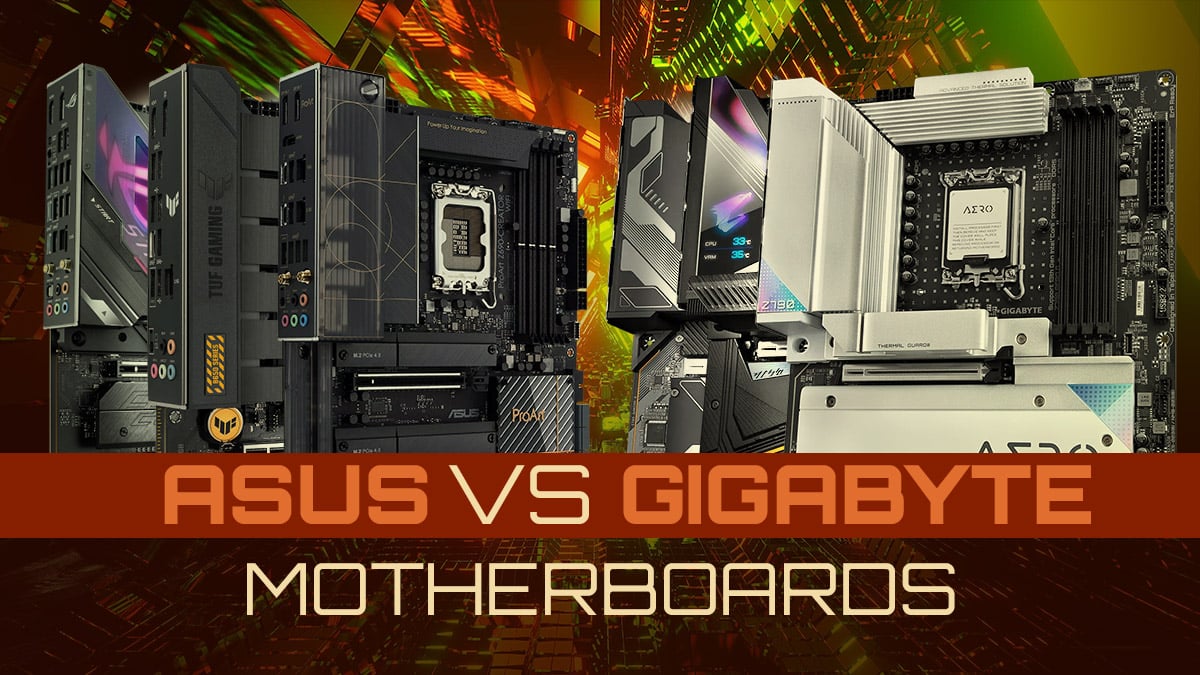
ASUS Motherboard vs Gigabyte Motherboard: A Comprehensive Comparison
When it comes to building a powerful and reliable computer, the choice of motherboard plays a crucial role. Two leading brands in the market, ASUS and Gigabyte, have gained significant popularity for their high-quality motherboards. In this blog article, we will delve into a detailed comparison of ASUS motherboards and Gigabyte motherboards, exploring their features, performance, and overall value.
Before diving into the specifics, it’s important to note that both ASUS and Gigabyte have established themselves as reputable manufacturers in the industry. They have been consistently delivering top-notch products, and their motherboards are widely used by both enthusiasts and professionals alike.
1. Design and Aesthetics
The first aspect to consider when comparing ASUS and Gigabyte motherboards is their design and aesthetics. ASUS often focuses on sleek and modern designs, incorporating features like RGB lighting and futuristic layouts. On the other hand, Gigabyte motherboards tend to have a more understated and professional appearance, with a focus on functionality rather than flashy aesthetics.
Summary: ASUS prioritizes modern and sleek designs with RGB lighting, while Gigabyte opts for a more professional and functional appearance.
2. Performance and Reliability
When it comes to performance and reliability, both ASUS and Gigabyte have a strong track record. ASUS motherboards are known for their exceptional overclocking capabilities, making them a preferred choice for gamers and enthusiasts who want to push their systems to the limits. Gigabyte motherboards, on the other hand, excel in stability and durability, ensuring that your system runs smoothly even under heavy workloads.
Summary: ASUS motherboards excel in overclocking and performance, while Gigabyte motherboards prioritize stability and durability.
3. BIOS Interface
The BIOS interface is a crucial element of any motherboard, as it allows users to access and configure various settings. ASUS motherboards typically feature a user-friendly BIOS interface with intuitive navigation and a wide range of options for customization. Gigabyte motherboards, on the other hand, offer a more simplistic interface that may appeal to users who prefer a straightforward approach.
Summary: ASUS provides a user-friendly and feature-rich BIOS interface, while Gigabyte offers a simpler interface for ease of use.
4. Expansion Slots and Connectivity
When it comes to expansion slots and connectivity options, both ASUS and Gigabyte offer a wide range of choices to cater to different needs. ASUS motherboards often come with multiple PCIe slots, allowing for ample expansion possibilities, while Gigabyte motherboards may focus more on providing a diverse array of ports for various peripherals.
Summary: ASUS emphasizes expansion slots, whereas Gigabyte prioritizes connectivity options with a variety of ports.
5. Audio and Networking Features
For gamers and multimedia enthusiasts, the audio and networking features of a motherboard are crucial. ASUS motherboards typically come equipped with premium audio components and advanced networking capabilities, ensuring immersive gaming experiences and lag-free online connectivity. Gigabyte motherboards also offer reliable audio and networking features, though they may not always match the high-end specifications provided by ASUS.
Summary: ASUS motherboards offer top-notch audio and networking features, while Gigabyte motherboards provide reliable options that may not reach the same level of excellence.
6. Software and Utilities
Both ASUS and Gigabyte provide a range of software and utilities to enhance the functionality of their motherboards. ASUS offers a comprehensive suite of applications, including AI Suite, which provides system optimization and monitoring tools. Gigabyte, on the other hand, focuses on simplicity with utilities like EasyTune, allowing users to easily adjust system settings.
Summary: ASUS offers a wide range of feature-rich software and utilities, while Gigabyte provides simpler tools for system customization.
7. Price and Value
Price is an important consideration for many users when choosing a motherboard. ASUS motherboards are typically priced at a premium, reflecting their high-end features and performance. Gigabyte motherboards, on the other hand, tend to be more budget-friendly while still offering excellent value for money.
Summary: ASUS motherboards come at a higher price point but offer premium features, while Gigabyte motherboards provide great value for money.
8. Customer Support and Warranty
Customer support and warranty policies can greatly influence the overall satisfaction with a motherboard purchase. ASUS and Gigabyte both have reliable customer support channels and warranty coverage, ensuring that users can seek assistance if any issues arise.
Summary: Both ASUS and Gigabyte offer reliable customer support and warranty coverage.
9. User Reviews and Feedback
Examining user reviews and feedback can provide valuable insights into the experiences of real-world users. Both ASUS and Gigabyte have amassed a significant number of positive reviews, indicating the overall satisfaction of their customers. It is important to consider individual needs and preferences when evaluating user feedback.
Summary: Both ASUS and Gigabyte receive positive reviews from users, reflecting their overall customer satisfaction.
10. Final Verdict
In conclusion, the choice between ASUS and Gigabyte motherboards ultimately depends on your specific requirements and preferences. ASUS excels in terms of design, overclocking capabilities, and premium features, making them a preferred choice for gamers and enthusiasts. Gigabyte, on the other hand, offers reliable performance, durability, and excellent value for money, making them a solid choice for budget-conscious users.
Regardless of your choice, both ASUS and Gigabyte are reputable brands that deliver high-quality motherboards, ensuring a solid foundation for your computer system.